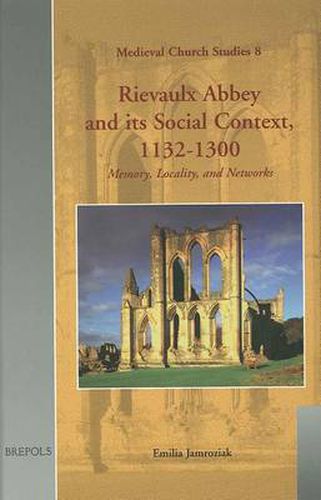Readings Newsletter
Become a Readings Member to make your shopping experience even easier.
Sign in or sign up for free!
You’re not far away from qualifying for FREE standard shipping within Australia
You’ve qualified for FREE standard shipping within Australia
The cart is loading…






Rievaulx abbey was one of the most prominent houses of white monks (Cistercians) in England, and became in the course of the twelfth and thirteenth centuries an important feature of the ecclesiastical and social landscape of Yorkshire. The present work is the first in-depth study devoted to Rievaulx’s social history. The abbey’s once extensive archives were largely destroyed after the Dissolution, but the surviving late-twelfth-century cartulary provides a fascinating insight into the process of creating institutional memory, preserving and shaping information about various neighbours of the abbey, and creating a ‘map’ of social networks that developed around Rievaulx. The complex picture of building and sustaining connections between the abbey and its lay patrons, benefactors and neighbours forms a core to this book. This study also examines how Rievaulxco-existed with other religious institutions in the area, and particularly the practical dimension of friendships between abbots, declarations of mutual support between monastic communities, and how these were reconciled with a fierce competition for land and donations. Contacts between Rievaulx abbey and the nearby archbishops of York and bishops of Durham were intense and these contacts demonstrate how important these prelates were as potential supporters, and how broader ecclesiastical issues influenced their relationships with Rievaulx. Whilst exploring the case of one particular monastery this book is an important contribution to the current debate on the shaping of Cistercian practice, and particularly the mechanisms for the interaction between laity and monastic communities, during the High Middle Ages.
$9.00 standard shipping within Australia
FREE standard shipping within Australia for orders over $100.00
Express & International shipping calculated at checkout
Rievaulx abbey was one of the most prominent houses of white monks (Cistercians) in England, and became in the course of the twelfth and thirteenth centuries an important feature of the ecclesiastical and social landscape of Yorkshire. The present work is the first in-depth study devoted to Rievaulx’s social history. The abbey’s once extensive archives were largely destroyed after the Dissolution, but the surviving late-twelfth-century cartulary provides a fascinating insight into the process of creating institutional memory, preserving and shaping information about various neighbours of the abbey, and creating a ‘map’ of social networks that developed around Rievaulx. The complex picture of building and sustaining connections between the abbey and its lay patrons, benefactors and neighbours forms a core to this book. This study also examines how Rievaulxco-existed with other religious institutions in the area, and particularly the practical dimension of friendships between abbots, declarations of mutual support between monastic communities, and how these were reconciled with a fierce competition for land and donations. Contacts between Rievaulx abbey and the nearby archbishops of York and bishops of Durham were intense and these contacts demonstrate how important these prelates were as potential supporters, and how broader ecclesiastical issues influenced their relationships with Rievaulx. Whilst exploring the case of one particular monastery this book is an important contribution to the current debate on the shaping of Cistercian practice, and particularly the mechanisms for the interaction between laity and monastic communities, during the High Middle Ages.